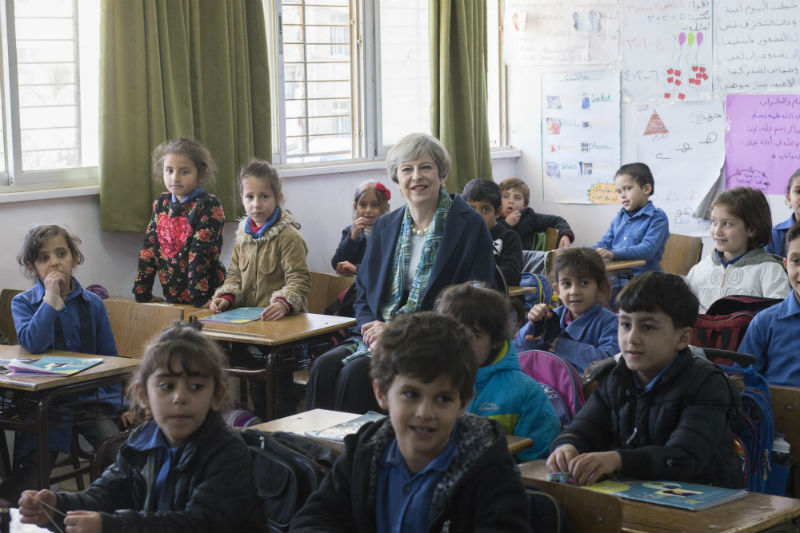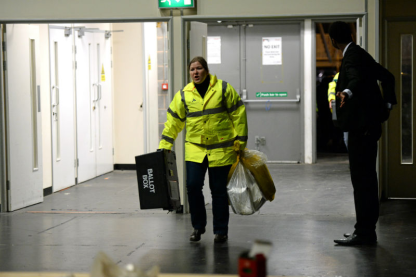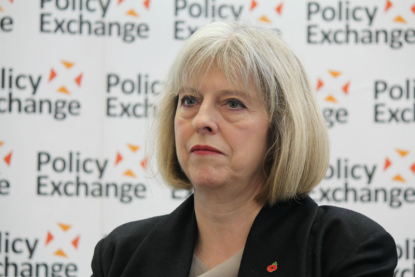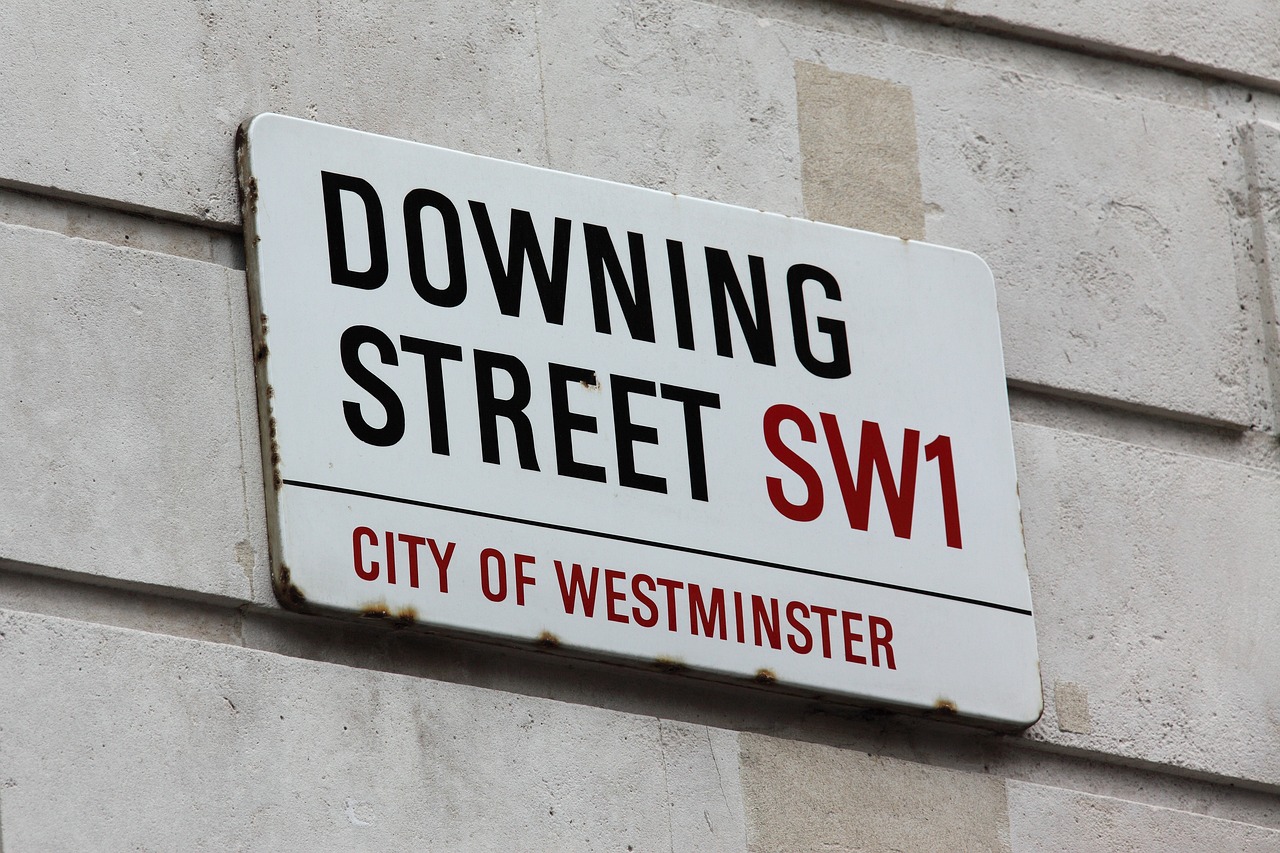 During her trip to Jordan, Prime Minister Theresa May visited Al-Zahra School, a school that integrates Jordanian children and Syrian refugee children.
During her trip to Jordan, Prime Minister Theresa May visited Al-Zahra School, a school that integrates Jordanian children and Syrian refugee children.
With Theresa May’s campaign visits being described by one journalist this week as “familiar neuron crushing dullness”, we shouldn’t have been expecting too much excitement from the Conservative Party manifesto. ![]()
The launch itself wasn’t exactly brimming with sunshine and rainbows. We heard about challenges, tough times and obstacles to the country’s future. The manifesto itself is a very sombre document – lacking the colour and photos which adorn the Labour and Liberal Democrat versions. The content underlines this sense of solemnity, setting out five “giant” challenges, of which Brexit is only one. It may claim to be a plan for a “vibrant” future, but it is worded more like an uphill struggle.
The Conservatives are describing their manifesto as a pitch to ordinary working people. But many of the policies in this manifesto – scrapping free school meals for infants, means testing winter fuel payments and removing the triple lock on pensions – could easily be described as vote losers. It seems to go against what the Prime Minister said in her very first words from Number Ten; fighting for ordinary families (or the “mainstream” as she called them today), who work around the clock but worry about the cost of living. The new social care package may sound appealing to some, but has been panned by the former government adviser Andrew Dilnot.
There are no real sweeteners in here, unless we count the 30 hours of free childcare, which was announced by the government in the last parliament anyway and would have happened with or without an election. We could see some of the key policies as an attempt to shore up the support of those who voted for Brexit back in 2016, many of whom will fall into this category of ordinary working families. Polling shows that these voters also care heavily about capping immigration, so this, along with plans for tougher student visa requirements and the doubling of charges on firms employing migrant workers, may go some way towards retaining their support.
Winning over new voters?
These manifesto pledges don’t really show us a party which is trying to win the votes of the mainstream majority. Rather, it shows us Theresa May’s supreme confidence in leading her party. She’s not afraid to ditch the pledges of her predecessor David Cameron.
We’ve had signs of this no-nonsense strategy throughout her short time as prime minister. She’s always taken a more traditional top-down approach and hasn’t been afraid to overrule her colleagues. But we’ve also seen it over the course of the campaign, particularly her decision to stand firm on the 100,000 migrant cap. And it’s not likely to do her any harm.
After all, strong leadership is a vote winner. We can also see clearly that the prime minister is willing to take a gamble. She is banking on voters appreciating her honesty and straight talking, something which is usually lacking in politicians. She set this up nicely when she called the Labour manifesto a “fantasy wish list”. And with the Conservatives still well ahead in the polls, this gamble may well pay off.
The gamble
But May’s speech may also cause her some problems. In particular, she emphasised the need to end “tribal politics”. Friction between the main parties inevitably dominates campaigns and it’s also unlikely that we’ll see an end to internal squabbling. We know that there are big divisions among leading Tories over the Brexit negotiations – which the manifesto’s commitment to leaving the single market (what some would consider a “hard” Brexit) will not have healed.
Her refusal to commit to a “May-ism” label when prompted by the press and the manifesto’s own discussion framing her policies as those just of “Conservatism” may shield the prime minister from any post-election fall-out. If the nation is really to “go forward together”, as the manifesto proposes, she needs to make sure that everyone really is on the same page. Branding her policies as common sense Conservatism is a sensible strategy – one which all of her colleagues should sign up to.
The talk throughout the manifesto is about the next five years being crucial for Britain’s future. And they certainly are. But hiding away on page 43 is a commitment to repeal the Fixed Term Parliaments Act. This is a prime minister who will not be bound by a five-year electoral cycle. So the country may get to deliver its verdict on her Brexit deal sooner than it thought after all.
This article was originally published on The Conversation. Read the original article.



Rate and Review
Rate this article
Review this article
Log into OpenLearn to leave reviews and join in the conversation.
Article reviews